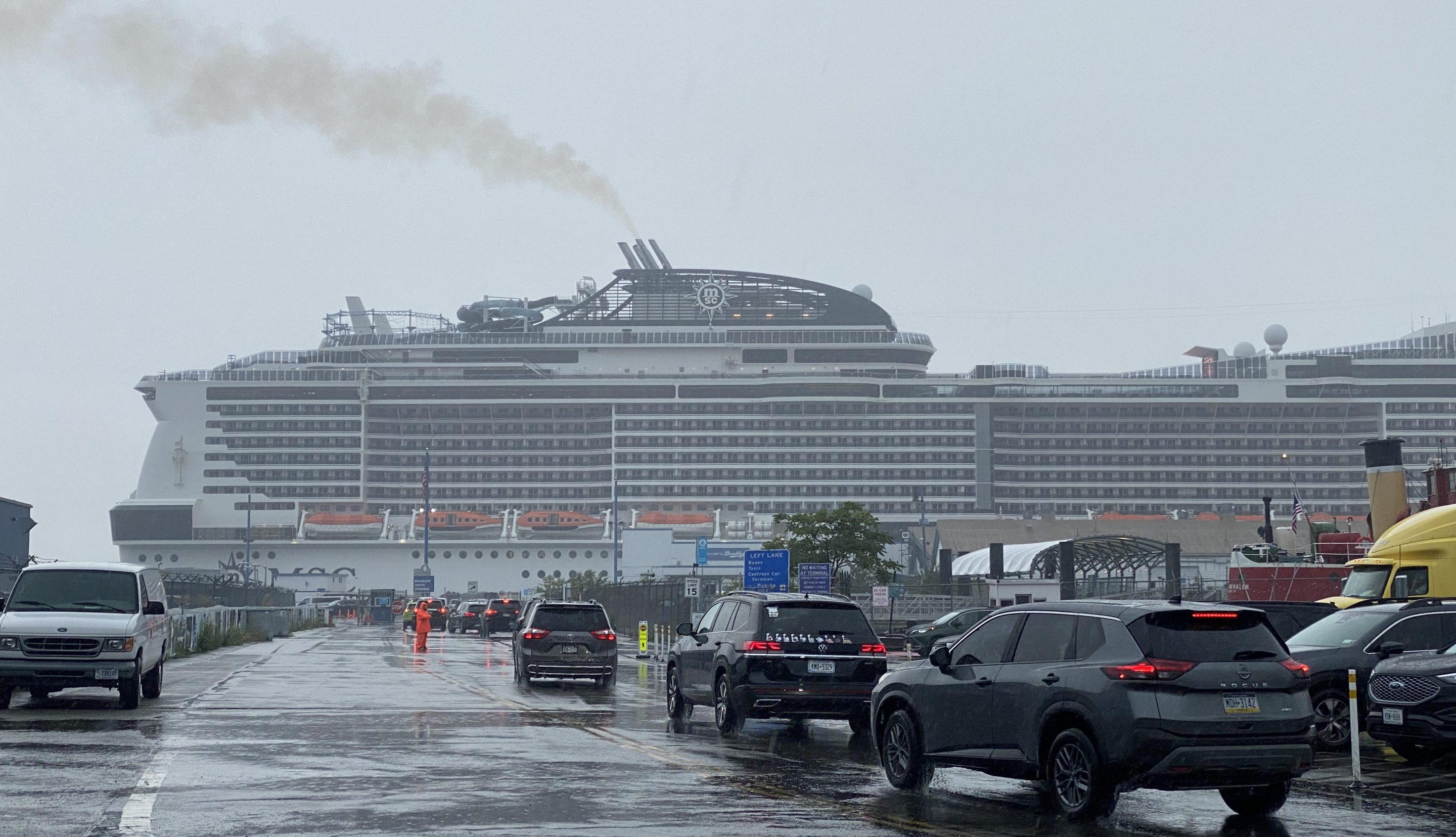New York City ports will continue to welcome pollution-spewing cruise ships for more than a decade — and that comes after more than a decade of promises to move the giant vessels from their own diesel engines to the electrical grid.
Cruise companies have agreed to make new ships capable of using so-called shore power by 2028, but the city will still give cruise liners until 2035 to retrofit their existing fleet, according to a deal between the major cruise lines and the city Economic Development Corporation.
That's more than a quarter of a century after city officials two mayors ago first hailed the arrival of shore power in 2009 — and both deadlines will still allow ships to keep relying on burning fossil fuels if shore power isn’t “feasible,” according to the agreement approved in September by EDC’s board, whose details are only now becoming clear.
EDC initially boasted that the agreement meant that “all ships calling in New York City be equipped with shore power connections by 2028,” but the fine print shows that such language only applied to the newly built watercraft, which are slated to come with the electric fittings anyway, officials admitted at a community meeting in Red Hook on Tuesday.
Residents and politicians of the waterfront enclave slammed officials for doing so little so slowly to rein in the polluting mega liners — something other ports on the West Coast figured out a decade ago.
“EDC has a long history of making promises and not following through on them,” said Adam Armstrong, a local advocate behind the blog A View From The Hook, at the community meeting. “Our kids have been suffering because of EDC’s negligence, and we're demanding an urgent solution to the assault of cruise ship pollution.”

The Big Apple is trailing other great ports of the country, such as in California, where officials began requiring at least a portion of ships use shore power a decade ago.
The Golden State now requires all cruises to either connect to shore power or opt for a limited set of state-approved alternatives, such as capturing emissions, or using alternative fuels such as liquefied natural gas without exceeding certain emission thresholds.
The Red Hook docks have had shore power since 2016 — the only such facility on the East Coast — but many of the skyscraper-sized vessels still don’t use it and instead burn enormous amounts of fossil fuels.
The other, busier cruise terminal on Manhattan’s West Side doesn’t even have the plug-in infrastructure, although city officials said they are studying it.
The saga of shore power
State officials with the Port Authority first announced shore power in 2009, and two years later, then-Mayor Michael Bloomberg promised the $21-million upgrade — essentially a crane with a plug — by 2012, saying it would result in the “near elimination” of 1,500 tons of carbon dioxide emissions a year, equivalent to more than 300 cars.
An analysis by the Coastal Conservation League, a South Carolina environmental protection organization, found that cruise ships emit the equivalent air pollution of more than 34,000 trucks. That would be enough trucks to cover more than half of Central Park.
Red Hook’s costly power crane doesn’t always fit well with ship plugs, however. For example, one of the world’s largest cruise ships, the Chrysler Building-sized MSC Meraviglia can’t connect to shore power, reportedly because its socket is on the wrong side.
Ships are sometimes also unable to connect because of bad weather or if there’s a risk of overloading the electrical grid and disrupting service to the surrounding neighborhood, according to EDC.
Mayor Adams celebrated MSC’s arrival to New York City in late 2022, and the company could be coming to the city’s waters for another 45 years, under the September agreement with EDC.
The massive ships have saddled the neighborhood with hundreds of cars passing through its bottlenecked streets, any time they’re ashore, Streetsblog previously reported.
Nearly 70 percent of ships that have the capability connected to shore power in 2023, according to an EDC official in charge of its cruise portfolio, but the corporation declined to say how many of its total ships hooked up to the grid.
“We ensure that if a shore-power-capable ship docks into Brooklyn, they make every attempt to connect,” Sudhir Puthran said at the meeting. “The new builds organically are shore-power capable. There are about 46 or so new ships that are being built and they’re all going to be shore power capable.”
New ships that don't connect to shore power by 2028 will lose out on credits against fees the cruise liners pay to use the wharf, according to the agreement, but officials didn't say how high those incentives could be.
In 2021, then-Borough President Eric Adams pledged $750,000 to expand shore power to fit more ships, and EDC officials expected to make adjustments by the end of last year, but the fix has been pushed back to the third quarter of this year, the corporation told Streetsblog.
“The challenge is, there is no set rule for where the show power hatches are. So we're trying to make improvements to our Brooklyn shore power unit as it stands,” Puthran said. “We’re trying to get a movable jib that will allow us a little bit more room to connect to additional vessels, plus we’re also looking at other optionalities to add more hardware to make ships such as MSC able to connect.”
That’s not fast enough, according to Council Member Alexa Avilés, who with Erik Bottcher, her counterpart representing the Manhattan terminal, introduced a bill last year that would have tightened shore power requirements.
“We want a more aggressive timeframe,” Avilés said. "But 2028 doesn’t work for us."
Avilés said that EDC President Andrew Kimball told her back in 2021 that the dock would get the jib in 2022. That didn't happen.
“We want the jib yesterday, we want 100 percent shore power,” said the lawmaker.






